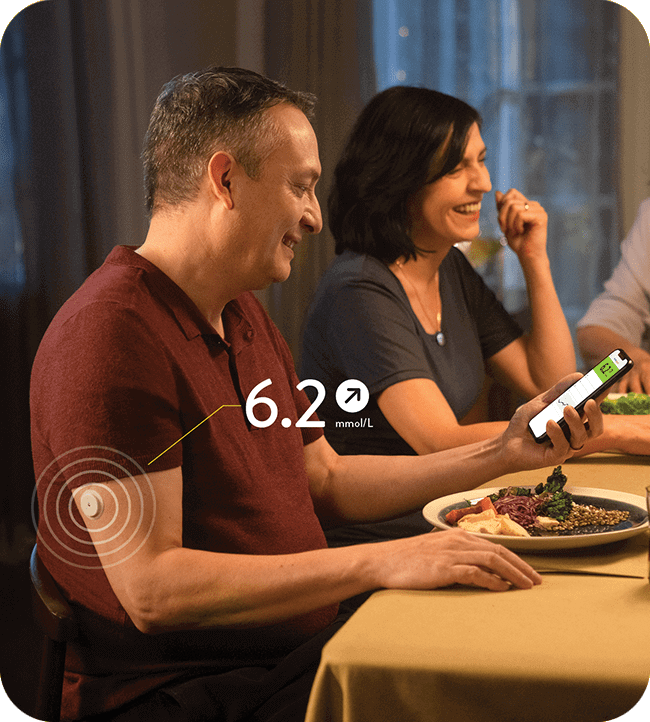References & Disclaimers
Images are for illustrative purposes only. Not real patient or data.
1. Data on file, Abbott Diabetes Care, Inc. Based on the number of users worldwide for the FreeStyle Libre portfolio compared to the number of users for other leading personal use sensor-based glucose monitoring systems.
2. Haak, T. Diabetes Ther. (2017): https://doi.org/10.1007/s13300-016-0223-6
3. Yaron, M. Diabetes Care (2019): https://doi.org/10.2337/dc18-0166
4. Leelarathna, L. N Engl J Med. (2022): DOI: 10.1056/NEJMoa2205650
5. Data on file, Abbott Diabetes Care, Inc.
6. For children aged 2-12, a caregiver at least 18 years old is responsible for supervising, managing, and assisting them in using the FreeStyle Libre 2 system and interpreting its readings.
◊ The FreeStyle LibreLink app is only compatible with certain mobile devices and operating systems. Please check the website for more information about device compatibility before using the app. Use of FreeStyle LibreLink may require registration with LibreView.
ǁ Glucose readings are automatically displayed in the FreeStyle LibreLink app only when your smartphone and sensor are connected and in range.
† Finger pricks are required when glucose readings and alarms do not match symptoms or expectations.
¤ Notifications will only be received when alarms are turned on and the sensor is within 20ft unobstructed of the reading device.
§ The LibreLinkUp app is only compatible with certain mobile devices and operating systems. Please check www.librelinkup.com for more information about device compatibility before using the app. Use of LibreLinkUp requires registration with LibreView. The LibreLinkUp mobile app is not intended to be a primary glucose monitor: home users must consult their primary device(s) and consult a healthcare professional before making any medical interpretation and therapy adjustments from the information provided by the app.
₼ The LibreView data management software is intended for use by both patients and healthcare professionals to assist people with diabetes and their healthcare professionals in the review, analysis and evaluation of historical glucose device data to support effective diabetes management. The LibreView software is not intended to provide treatment decisions or to be used as a substitute for professional healthcare advice.
₸ Sensor is water0resistant in up to 1 metre (3 feet) of water for a maximum of 30 minutes. Do not immerse longer than 30 minutes. Not to be used above 10,000 feet.
φ When Bluetooth® is unavailable scan to get glucose readings and fill in up to 8 hours of missing data.
~ Daily Patterns needs at least 5 days of glucose data.
‡ 60-minute warm-up required when applying the sensor.
ADC-66112 v5.0
.svg)







Stay connected